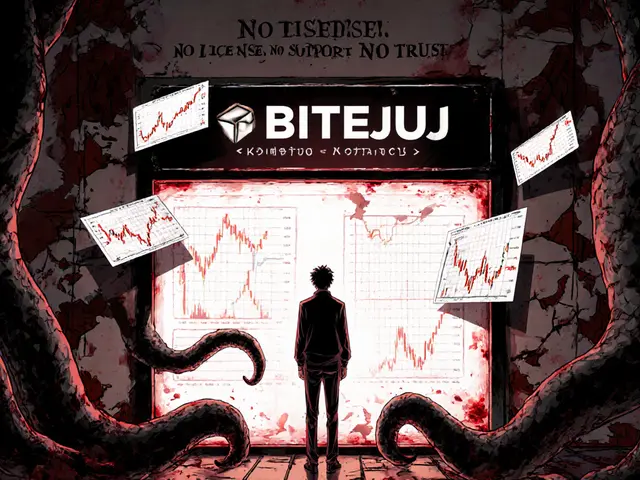Crypto Exchange Compliance Checker
Compliance Assessment Tool
Answer these questions to determine if your multi-exchange strategy complies with regulations and avoids sanctions evasion risks.
Exchange Usage
Compliance Practices
Compliance Assessment Result
Loading...
Loading...
Recommended Actions:
- Complete KYC verification on all exchanges
- Use AML screening tools to monitor transactions
- Store most assets in a hardware wallet
- Report all large transactions to tax authorities
Quick Takeaways
- Multi‑exchange strategies can give you better prices, higher liquidity, and access to markets that single platforms block.
- Legitimate uses (arbitrage, risk management) are legal if you follow KYC/AML rules.
- Criminals rely on nested exchanges, compromised wallets, and non‑compliant platforms to dodge sanctions.
- Regulators such as OFAC and the SEC are tightening enforcement; ignoring the rules can lead to frozen assets or legal trouble.
- Use a compliance checklist and monitoring tools to protect yourself from fraud and regulatory penalties.
Ever wondered why some traders hop between Binance, Kraken, and a handful of smaller platforms in a single day? The short answer: they’re trying to get around crypto exchange restrictions. Whether you’re hunting for a better rate, need to move funds across borders, or simply want to stay under a platform’s daily limit, juggling multiple exchanges is a common tactic. But the practice sits on a thin line between savvy trading and illicit evasion. Below we break down how it works, what the law says, and how you can stay on the right side of regulators.
What is a Cryptocurrency exchange?
A cryptocurrency exchange is a web‑or‑app service that lets you trade digital assets for fiat money or other crypto. Exchanges vary widely: some are fully regulated and require thorough identity checks, while others operate with little to no KYC, offering instant trades for anyone.
Why People Use Multiple Exchanges
There are three main, perfectly legal reasons traders spread their activity across several platforms:
- Arbitrage opportunities - price differences between exchanges can be as high as 5 % on volatile coins. Buying low on one platform and selling high on another can generate quick profit.
- Access to regional markets - some exchanges only serve users in Europe, others focus on Asia. By holding accounts in multiple jurisdictions, traders can tap global liquidity pools.
- Bypassing transaction limits - many exchanges cap daily withdrawals or trading volume for compliance reasons. Splitting trades across accounts helps stay under those caps.
All of these strategies are legal as long as you comply with each exchange’s KYC/AML policies and report any taxable events to your local tax authority.
Illicit Methods: How Criminals Dodge Restrictions
When the goal shifts from profit to concealment, the tactics get riskier. Merkle Science has identified eight primary ways criminals use multiple exchanges to evade sanctions. Below are the most common:
- Compromised wallets - thieves steal private keys from KYC‑verified accounts, then whisk the funds through a chain of fresh, unregistered wallets to hide the trail.
- Non‑compliant exchanges - platforms based in jurisdictions that ignore OFAC rules (e.g., Russia, North Korea) become exit nodes for laundered crypto.
- Nested exchanges - these act as a bridge between the user and a suite of other platforms. A user deposits on the nested service, which then trades on several external exchanges, masking the original source.
- Decentralized exchanges (DEXs) - because DEXs run on smart contracts without a central authority, regulators can’t compel them to freeze assets. Users can swap tokens peer‑to‑peer instantly.
- Coin‑swap services - often operated via instant‑messaging apps, they let people trade crypto for cash without any sign‑up, making them a hotbed for quick evasion.
Each method adds a layer of opacity, making it harder for law‑enforcement to trace the money flow.
Nested Exchanges Explained
Think of a nested exchange as a “middleman for middlemen.” A user sends crypto to the nested platform; the platform then holds accounts on several larger exchanges and executes trades on the user’s behalf. Because the nested service often skips KYC, the underlying trades appear to come from the larger exchange, not the original user.
For example, Platform X might hold accounts on Binance, Huobi, and Kraken. When you deposit 1 BTC, X could split it into three parts, trade each piece on a different exchange, and return the proceeds to you. The trail ends at the three big exchanges, while the link to your original wallet is obfuscated.
Regulatory Crackdown
Regulators are catching up fast. In March 2025, the U.S. Treasury’s Office of Foreign Assets Control (OFAC) designated the exchange Grinex as a sanctions‑evasion entity. Grinex was created by former Garantex staff specifically to help users move funds after Garantex was frozen. Within weeks, the U.S. Secret Service seized assets and forced the platform offline.
The Securities and Exchange Commission (SEC) has also stepped up. Chair Gensler testified that most crypto tokens are securities, meaning any platform that matches buyers and sellers must register as an exchange. Failure to register can lead to hefty fines and injunctions.
These actions send a clear message: using multiple exchanges to sidestep sanctions isn’t a gray area-it’s a prosecutable offense if the intent is to evade lawful restrictions.

Compliance Checklist for Legitimate Multi‑Exchange Users
| Legitimate Step | Illicit Red Flag | Typical Impact |
|---|---|---|
| Complete full KYC on each platform | Use of a service with no KYC or “instant signup” | Reduced risk of account freeze, legal exposure |
| Maintain transparent transaction records | Multiple rapid hops through obscure wallets | Ease of audit, faster tax reporting |
| Apply AML screening tools (e.g., Chainalysis) | Routing trades through nested exchanges in sanctioned jurisdictions | Early detection of suspicious flow |
| Report large withdrawals to the relevant tax authority | Unreported high‑value transfers | Compliance with local law |
Follow this checklist every time you open a new account or move funds between platforms. It helps you stay on the right side of the law while still reaping the benefits of a multi‑exchange strategy.
Security Risks You Can’t Ignore
Even if you’re only after better prices, using several exchanges expands your attack surface:
- Custody risk - each platform holds a portion of your assets. A breach at any one of them could result in loss.
- Phishing attacks - criminals send fake login links for the exchanges you use, hoping you’ll give away credentials.
- Regulatory freezes - if any exchange you’re linked to gets blacklisted, the assets you hold there could be frozen, affecting your entire portfolio.
Mitigate these issues by using hardware wallets for long‑term storage, enabling two‑factor authentication everywhere, and regularly reviewing the legal status of each exchange.
Detection and Prevention Tools
Many compliance firms now offer SaaS solutions that automatically scan your transaction history for red flags. Popular options include:
- Chainalysis Reactor - visualizes fund flows across multiple blockchains.
- Elliptic Navigator - flags transactions involving sanctioned addresses.
- CipherTrace Watchlist - continuously monitors for known illicit wallets.
Integrating at least one of these tools into your workflow gives you a real‑time safety net. If a transaction triggers a warning, pause the movement and investigate before proceeding.
Best Practices for a Safe Multi‑Exchange Strategy
- Pick exchanges that are registered with local regulators and have a clear KYC/AML policy.
- Keep a master spreadsheet of all accounts, deposit dates, and withdrawal limits.
- Use a reputable hardware wallet to store the bulk of your holdings; only keep “trading capital” on exchanges.
- Run periodic AML scans on your own wallet addresses using free blockchain explorers (e.g., Blockchair) and paid services for deeper insight.
- Stay updated on sanction lists published by OFOFAC and other relevant bodies.
- When you spot a nested or obscure platform, treat it as a high‑risk vendor - limit exposure to a few percent of your portfolio.
- Document every cross‑exchange move for tax reporting; many jurisdictions require detailed logs.
Follow these steps and you’ll enjoy the flexibility of multiple exchanges without landing in legal hot water.
Future Outlook
Regulators worldwide are moving toward a unified “crypto AML standard.” By 2026, we expect most large exchanges to share AML data in real‑time, making it almost impossible to hide behind a chain of small platforms. At the same time, privacy‑focused technologies (e.g., zero‑knowledge proofs) are emerging, giving users a way to prove compliance without revealing full transaction details. The tug‑of‑war between privacy and enforcement will shape how multi‑exchange strategies evolve over the next few years.
Is it legal to use more than one crypto exchange?
Yes, as long as each exchange you use complies with local KYC/AML regulations and you report any taxable events. The legality disappears when you use non‑compliant platforms to dodge sanctions or hide illicit funds.
What are the biggest red flags that an exchange might be used for sanctions evasion?
Key red flags include instant‑trade services with no KYC, frequent rapid hops through obscure wallets, reliance on nested exchanges based in sanctioned jurisdictions, and trading on DEXs that do not record user identities.
How can I protect my funds when using multiple exchanges?
Store the majority of assets in a hardware wallet, enable two‑factor authentication on all accounts, keep detailed records, and regularly run AML scans on your addresses.
What recent enforcement actions should I be aware of?
In March 2025, OFAC designated the exchange Grinex for facilitating sanctions evasion after its parent platform Garantex was frozen. The SEC has also increased scrutiny on unregistered crypto intermediaries, threatening fines and injunctions.
Do decentralized exchanges count as “exchanges” under the law?
Most regulators treat DEXs differently because they lack a central operator. However, users can still be held accountable for illicit activity conducted on a DEX, especially if they convert crypto into fiat through a regulated gateway.







Rohit Sreenath
October 26, 2025 AT 09:39Chasing better rates across several exchanges may look clever, but each extra platform adds a new point of failure. You end up juggling KYC checks, withdrawal caps, and security settings. In the end, the risk often outweighs the marginal savings.
Sam Kessler
November 2, 2025 AT 05:22When you peel back the veneer of these so‑called “multi‑exchange arbitrage” strategies, you see a coordinated orchestration designed to obfuscate the true flow of capital. The regulatory bodies are merely puppets in a larger schema engineered by shadow‑y conglomerates seeking to monopolize liquidity. By dispersing trades across ostensibly independent venues, actors can exploit blind spots in the AML data aggregation pipelines, effectively rendering surveillance inert.
Steve Roberts
November 9, 2025 AT 03:51Everyone hails the flexibility of hopping between Binance, Kraken, and a handful of niche platforms, yet the hype eclipses the mundane reality: added complexity, higher fees, and a broadened attack surface. If you’re not meticulously tracking every transfer, you’re courting disaster. Simpler is often safer.
John Dixon
November 16, 2025 AT 02:20Oh, brilliant insight-because reducing everything to “simpler is safer” magically solves every compliance nightmare, right?? Adding a dash of sarcasm doesn’t change the fact that many traders actually profit from legitimate arbitrage, provided they respect KYC and AML protocols. Nonetheless, your blanket dismissal is noted.
Brody Dixon
November 23, 2025 AT 00:49I hear you both. While the allure of arbitrage is real, the key is disciplined record‑keeping and using hardware wallets for the bulk of holdings. A balanced approach mitigates risk without discarding opportunities.
Mike Kimberly
November 29, 2025 AT 23:18When evaluating a multi‑exchange strategy, one must first acknowledge the inherent tension between operational agility and regulatory oversight. Each exchange operates under its own jurisdictional framework, which imposes varying KYC, AML, and reporting requirements. Consequently, a trader who wishes to traverse these ecosystems must harmonize disparate compliance checklists, an endeavor that can quickly become labyrinthine. Moreover, the technical overhead of managing API keys, secure storage, and two‑factor authentication across multiple platforms magnifies the probability of human error. Human error, in turn, can manifest as mis‑routed transfers, inadvertently breached withdrawal limits, or exposure of credentials to phishing attempts. From a financial perspective, while price discrepancies may occasionally present a five‑percent arbitrage window, the cumulative transaction fees, network gas costs, and spread slippage often erode a substantial portion of the projected gain. Tax implications further complicate the picture, as each jurisdiction may demand detailed reporting of capital gains, necessitating meticulous bookkeeping lest one invites audit scrutiny. In addition, the security landscape evolves rapidly; a breach at a single exchange can compromise assets held there, underscoring the importance of diversification of custody solutions. Deploying a hardware wallet for the majority of holdings while allocating only a modest portion for active trading mitigates exposure. It is also prudent to employ reputable AML monitoring services, such as Chainalysis or Elliptic, which provide real‑time alerts on suspicious address interactions. By integrating these tools, traders can proactively freeze or investigate questionable flows before they crystallize into regulatory red flags. Furthermore, remaining abreast of sanction lists issued by bodies such as OFAC ensures that no inadvertent dealings with prohibited entities occur. As the regulatory environment coalesces towards unified AML standards, the cost of non‑compliance is poised to increase, making vigilance indispensable. Ultimately, an informed trader who couples strategic opportunism with rigorous risk management can reap the benefits of a multi‑exchange approach while staying firmly within legal boundaries.
angela sastre
December 6, 2025 AT 21:47Start by listing every exchange you plan to use, then verify each one’s KYC requirements and ensure you have two‑factor authentication enabled. Keeping a spreadsheet of deposit dates, amounts, and withdrawal limits will save you headaches during tax season.